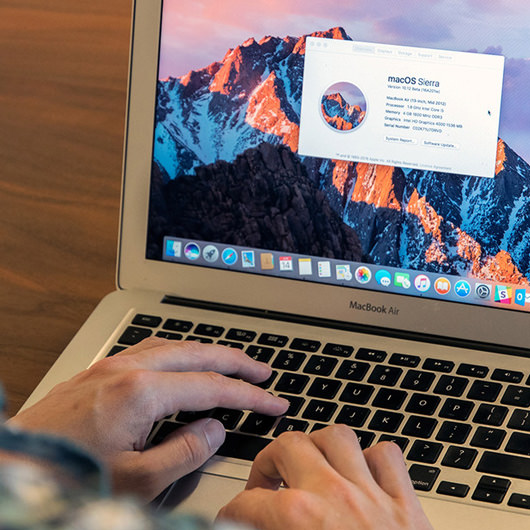

- #MAC OSX SIERRA MICROSOFT KEYBOARD MAPPING HOW TO#
- #MAC OSX SIERRA MICROSOFT KEYBOARD MAPPING BLUETOOTH#
- #MAC OSX SIERRA MICROSOFT KEYBOARD MAPPING MAC#
It dawned on me, though, that if that forum post ever vanishes, I'll be in trouble with future new Macs and/or reinstalls, so I thought I'd document it here, too. My daughter's fave game, Sims 3, was getting stuck on the loading screen in Sierra. After much scouring of the internet, I found the solution and tweeted about it:
#MAC OSX SIERRA MICROSOFT KEYBOARD MAPPING MAC#
Questions? Comments? Have a fix? Post them below orīe sure to check us out on Twitter and the CNET Mac forums.When we upgraded all our Macs to macOS Sierra, my daughter was upset because Sims 3 broke.
#MAC OSX SIERRA MICROSOFT KEYBOARD MAPPING BLUETOOTH#
Again for a Bluetooth keyboard, this needs to be done after you hear the boot chimes, or using an alternative keyboard. By default the PRAM variables mentioned here are empty, so you can delete them by running the following commands:Ī final approach to clearing these is to simply reset the system's PRAM by rebooting and holding down the Option-Command-P-R keys at startup.
#MAC OSX SIERRA MICROSOFT KEYBOARD MAPPING HOW TO#
If you want to boot to Safe, Verbose, or Single User modes and cannot do so at startup with a key command, you will need to use one of these Terminal command options.Ī final word of note when adjusting PRAM values is how to revert any changes you make. The option for rebooting the system into Target Disk mode or choosing an alternative boot partition can be done in the Startup Disk system preferences pane, so using the Terminal for these options is not a requirement for those with wireless keyboards. but in addition if you need to load the system into Target Disk mode, you can do so by setting the "target-mode" PRAM variable in the following way (this will be enabled only once for the next time the system is started): The "boot-args" variable can be used for setting the above modes. Sudo nvram boot-args="-s rd=disk1s2" The Target Disk mode and startup disk can be set in the system preferences, which may be preferable to using Terminal commands. For example, if you would like to load the system in Single User mode and boot from the first partition on the second hard drive in the system, then you would issue the following version of the command: The DISKID value can also be "*hd:NUMBER" where NUMBER is the partition of the drive to use as the boot volume. In the "rd=DISKID" option, DISKID is a BSD device ID such as "disk0s1" for the first partition or "slice" of the disk0 device. Rd=DISKID - force booting to a specific partition. In this command, the VALUE component is one or more of the following flags separated by spaces, that will tell the kernel to load in the corresponding way: Setting the boot arguments PRAM variable requires administrative access, and is done from the Terminal using the following command: Alternately, you can manually adjust the system's PRAM variables to invoke these boot arguments the next time the system starts up. Should that happen, you can try various alternative approaches, such as using a spare USB keyboard to connect and send the desired boot argument to your system. While this approach for wireless keyboards should work, it may not in all situations. Therefore, for Bluetooth keyboards, be sure to press the desired key sequences after you hear the boot chimes and not before. However, if these inputs are performed after the controllers are activated, then they will be properly read. If any inputs are being sent via the Bluetooth keyboard before the controllers are active, then they will not be recognized by the system. These are then passed to the OS X kernel to invoke the desired startup sequence. It is at this point that the system will accept boot variables, either stored in the PRAM or those being sent via keyboard inputs.

There are a couple of workarounds if you find yourself in this situation.Īpple's Bluetooth hardware controllers activate after all of the system's self-tests at boot complete and the EFI firmware loads successfully, which is indicated by the system playing the standard Mac startup sound. While you might assume that these options require a USB keyboard or other physical connection, this is not always the case. These options can be invoked by holding their respective key combinations immediately when powering on the system however, if you use Apple's Bluetooth keyboard, you could find that the system may ignore these inputs and boot normally. In addition there is Single User mode (Command-S) for a command-line interface, Apple's hardware diagnostics tests (the "D" key), Target Disk mode (the "T" key), and holding the Option key will bring up the boot loader for choosing a startup disk. Of these, Safe Mode is perhaps the most common it offers a limited boot environment and can be started by holding the Shift key. Apple offers several alternative boot environments for OS X that can help you troubleshoot problems you might be experiencing, which can be invoked by holding various key combinations at startup.


 0 kommentar(er)
0 kommentar(er)
